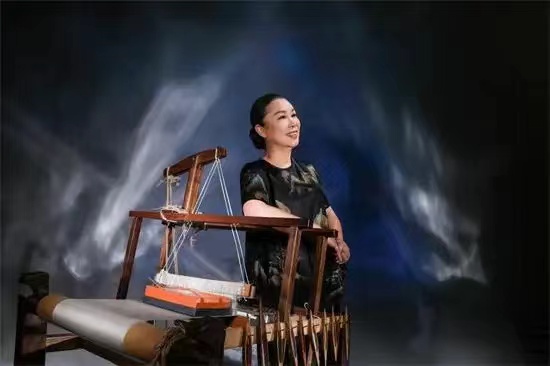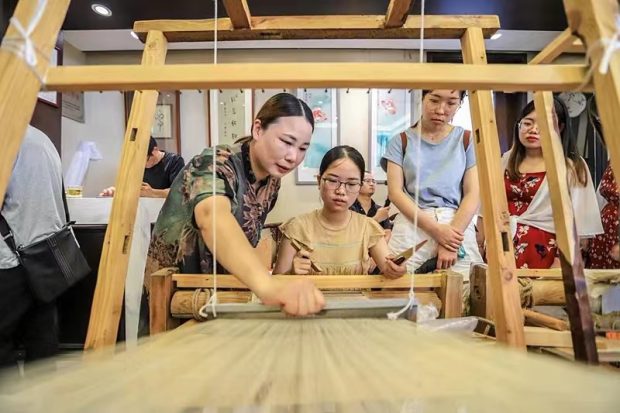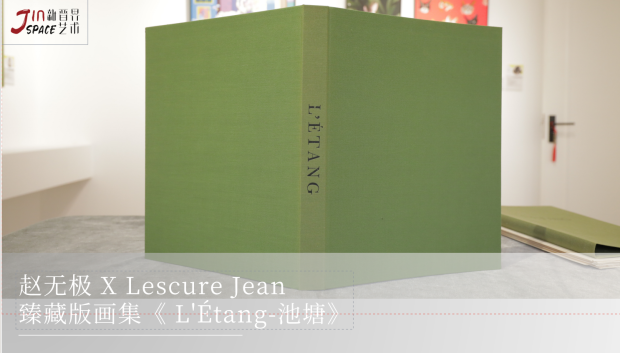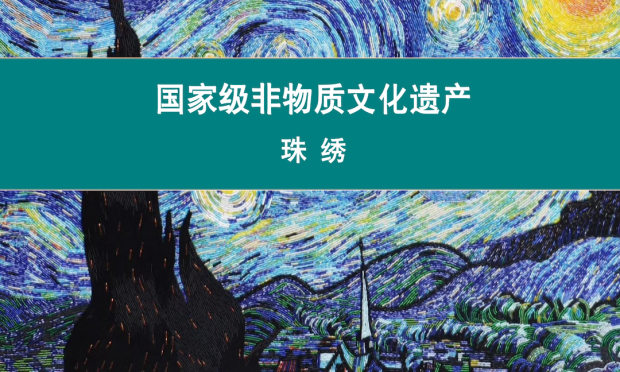
Kesi, a World Intangible Cultural Heritage item, is a unique and superb technique exclusive to China. It was once on the verge of being lost, and even today, there are very few inheritors with high proficiency in it. Due to the limitations of silk weaving and dyeing technologies, in traditional Kesi works, many details that could not be completed using the Kesi technique were compensated for by calligraphy, painting, embroidery, and other means. However, Cai Xiaming is a woman who pursues perfection. She drew on the color-matching technique in embroidery. According to the color requirements of the painting, she added different colors at different levels, and the changes in the sequence presented completely different colors. It sounds simple, but in fact, it is extremely complicated. Even a tiny mistake will prevent achieving the desired effect. But Cai Xiaming managed to do it. A work named “Auspiciousness” on the wall is an ultimate expression of this. In the painting, the Water-Moon Guanyin has a serene and dignified expression. Through the white gauze on her body, one can clearly see the luster and patterns of the璎珞 (Buddhist ornaments) and the dress. The transparent base under the pure water bottle also demonstrates this sense of perspective. From her initial resistance to now regarding it as her life, Cai Xiaming’s more than 20-year journey in Kesi can be summed up in one sentence: “Our ancestors created such exquisite works on such simple wooden frames. This craftsmanship should not be lost in my hands. I want to do my best and leave behind my finest works.”



















Be the first to leave a comment